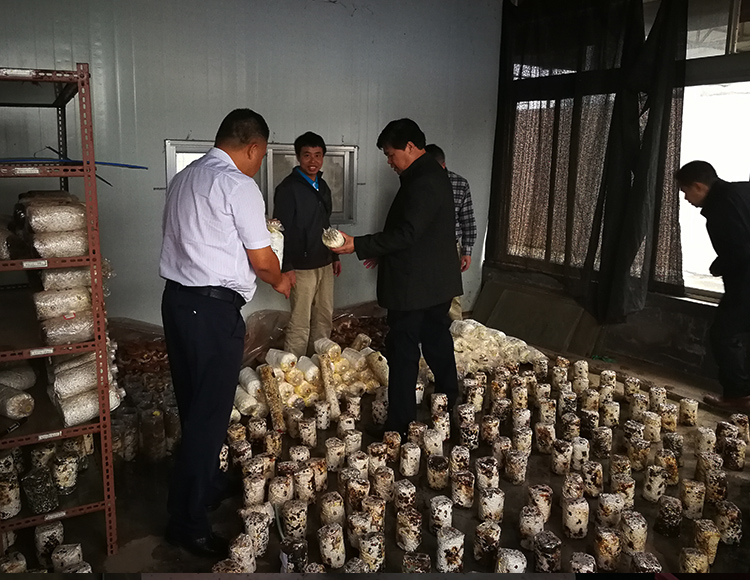Recently, Chen Geng, chairman of our company, and President An Jiacheng of Guangxi Institute of forestry science and related experts led a line of research on edible fungi.
Edible mushrooms are large and edible mushrooms (large fungi), commonly known as mushrooms. Edible fungi Chinese known to have 350 kinds, one is basidiomycotina. Common edible fungi are: letinous edodes, mushrooms, mushrooms, edible fungus, white fungus, Hericium, Dictyophora, Tricholoma matsutake (Tricholoma matsutake), and Russula, Ganoderma lucidum, Cordyceps, mushroom and truffle, Ling Bai bolete; a few belong to ascomycotina, including: morel, Helvella truffle, etc.. The above fungi are grown in different regions and in different ecological environments.
More than 12 species of fungi have been described in the world, and more than 6000 species can form large fruiting bodies or sclerotium tissues. There are more than 2000 species of edible fungi, and only 40~50 species can be cultivated in large area. Belong to the door in the classification of fungi mediated fungi edible fungi, most of which belongs to basidiomycotina (such as mushroom, letinous edodes), a few belong to ascomycotina (such as morels).
China edible fungus is very rich in resources, according to statistics, edible fungus Chinese known about 657 species, which belong to 41 families, 132 genera, 620 species which belong to (94.4%), 39 species of Ascomycetes (5.6%). In 2000, there were 938 species of edible fungi in China and more than 50 species of artificial cultivation. The beginning of the 80s, mushroom cultivation as a small investment, short period, quick rich good project to the rapid development in China, edible fungus products once the supply price of money.

The mushroom industry is the development of the rural economy to a fast track project in economic, ecological and social benefits in one of the edible fungi is a kind of organic green food, nutrition and health.

The development of edible mushroom industry is in line with the needs of the growth of people's consumption and the sustainable development of agriculture, and it is an effective way for farmers to get rich quickly. Some countries also built mushroom factories with annual output of more than 1000 tons of fresh mushrooms. They also developed techniques for producing edible additives, such as family mushrooms for both ornamental and food, and liquid fermentation with mycelia.
In twenty-first Century, edible fungi will become one of the main protein foods for human beings. In 2005, the total output of Chinese edible fungi reached 12 million tons, ranking the first in the world. According to the relevant website survey, the total output of Chinese edible fungi reached 20 million tons in 2010, accounting for 70% of the world's total.


